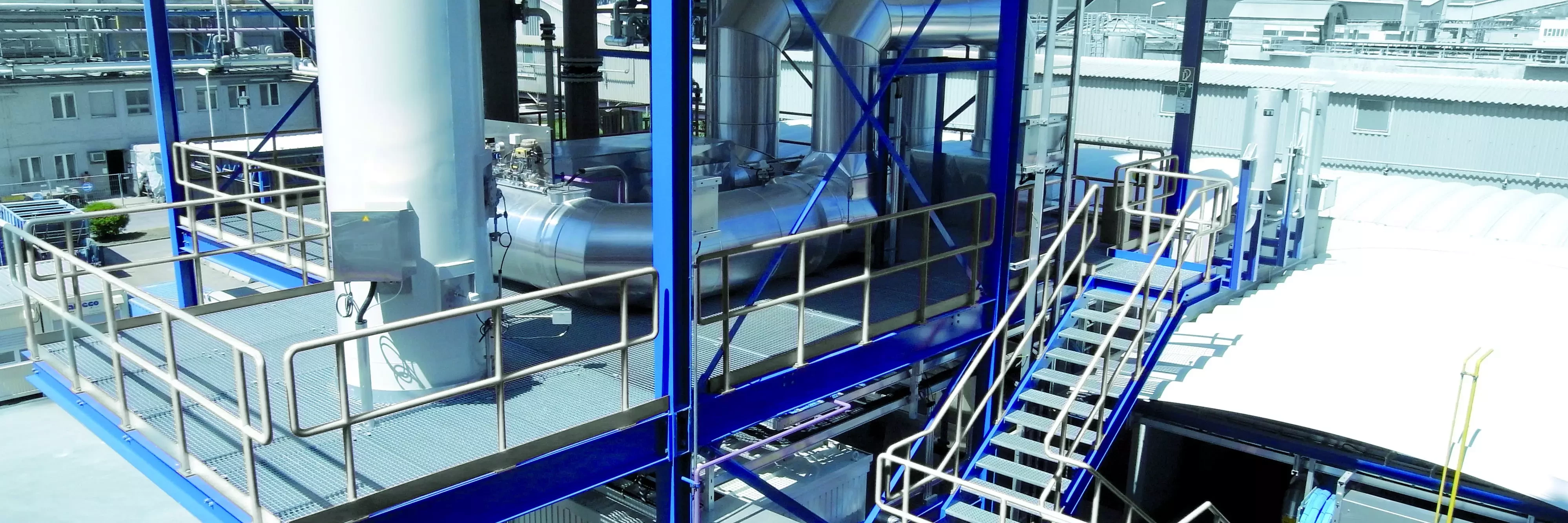The air pollution control specialists Environmental and Energy Systems (EES), a business unit of the Dürr machinery and plant manufacturing group, prefers to apply catalytic methods when treating air pollutants in the chemical processing industry. Classical areas of application are abatement systems used for PTA production facilities, for calcination processes (catalyst manufacturing) and for manufacturing of maleic anhydride, olefines, natural rubber and acrylic.
For more cost efficiency, treatment of smaller exhaust air streams and lower VOC loads is becoming the predominant trend. This includes in the chemical processing, petrochemical, and pharmaceutical manufacturing industries. Since solvents remain a cost factor, the quantity of solvents discharged with the exhaust air stream should be as low as possible. Advanced production processes consider this issue more and more in their material efficiency calculations.
Choosing the Correct Method: Weighing the benefits
Some important standards for selecting the appropriate procedure are the process parameters such as flow rate, temperature, particulates in the contaminated air, and the species of VOCs. To choose the right catalyst, it is important to know the type of VOCs (aromatic, oxygenated, halogenated hydrocarbons or alcanes) that have to be removed. For short-chain alcane methane, an effective catalyst is currently not available. The aim is, however, that future catalyst types will be capable of removing this substance.
In order to be in a better position to offer the most suitable catalyst, Dürr is partnering with catalyst manufacturers such as Haldor Topsoe to make beneficial use of their wide-ranging portfolio.
Catalyst poisoning can de-activate the catalyst within a short operating time. The catalyst material may have to be replaced in order to keep emission levels within specified limits. The active substances of the catalysts and the catalyst poisons have not changed significantly in the past decades. Substances such as silicon, phosphorus, sulfur, halogens, and metals - in particular germanium, arsenic, selenium and tellurium - are the materials that are most often cited to cause poisoning. These substances can be tolerated in low concentrations, but certain limits must not be exceeded.
The last important criterion for selecting the proper abatement method is the VOC concentration itself. Catalytic methods differ from comparable thermal procedures methods. Catalytic methods can be auto thermal at lower concentrations than thermal methods. This means that no additional energy needs to be supplied to sufficiently pre-heat the contaminated air to the necessary temperature when it flows through the catalyst. When VOC concentrations are too high, the air has to be diluted before it passes through the abatement system. However, certain limits are set. If the treated air stream is diluted too much, the air flow rate increases disproportionately, which results in higher costs for the individual equipment units and the catalyst.
The benefits of catalytic abatement methods result ultimately from the operating costs saved in primary energies. VOCs can be removed without any additional energy when VOC concentrations are low. As a result, fuel consumption, CO2, and NOx decrease in comparison to other thermal methods.
Catalytic abatement technology made by Dürr
High pressure catalytic systems
For the purification of flue gases from facilities producing purified terephthalic acid - PTA for short - and other applications exhausted at a high pressure, Dürr applies the Ecopure® HPX abatement system as a standard. The high-pressure PTA flue gas typically contains methyl acetate, methyl bromide, and carbon monoxide can be treated directly without prior decompression.
The flue gas from the process is heated to the required catalyst operating temperature by a combination of heat exchangers which operate on steam or preheated air and by a purified air heated air-to-air heat exchanger. After conversion of the pollutants on the catalyst, the purified flue gas is cooled and the heat is recovered in the air-to-air heat exchanger. The purified, pressurized flue gas is then routed to an expander for energy recovery, used for pneumatic conveying, or further treatment of hydrobromic acid. Dürr is currently engineering, fabricating, and installing an Ecopure® HPX for a PTA production site in China. This HPX system has a treatment capacity of 440,000 kg/h.
Low pressure catalytic systems
Ecopure® LPX systems are in principle suitable for all catalytic applications. In an Ecopure® LPX system, the conversion of VOCs takes place at pressures slightly above or below ambient pressure. The exhaust air from the production facility is typically heated by an air-to-air heat exchanger. The air is usually then heated further to the necessary catalyst operating temperature by a burner, thermal oil, or steam. The heat generated during the VOC conversion process is transferred to the untreated exhaust air from the production facility. If the VOC concentration is so high that more heat is generated than required, the excess heat can be ducted through a heat exchanger bypass directly into the stack without being used. Dürr’s most recent Ecopure® LPX system is currently being commissioned at Sauer Continence's facility, a customer of Dürr’s, in Germany. This very compact system is designed for a capacity of 3,000 Nm³/h.
Regenerative catalytic systems
If exhaust air from a production facility has a very low VOC concentration, a more efficient heat exchanger material has to be applied than the recuperative heat exchanger systems used in the Ecopure® LPX model. Dürr's Ecopure® RCO (regenerative catalytic oxidizer) is the right system for this purpose. In this system, the process air is heated up in a regenerative manner via ceramic heat exchange media before the VOCs are then converted by the catalyst. After treatment, the heat in the purified air is again recovered in the ceramic media. The stored heat is then transferred to the contaminated air again. To ensure that this principle works reliably, the Ecopure® RCO has at least two ceramic heat exchange media beds that are interconnected by a combustion chamber, which alternately transfer and/or absorb the energy.
Flue gas purification
Ecopure® SCR systems, for the selective catalytic reduction of NOx, catalytically convert nitrogen oxides contained in flue gas. As this is not a system for the conversion of VOCs, this system type is not described in further detail, and is only mentioned here for the sake of completeness.
With a broad range of VOC removal systems, Dürr is flexible in its abilities to offer pollution control solutions to its customers for a wide variety of different production processes. Dürr's Ecopure® systems not only provide effective and efficient solutions to compliance issues, but also offer low operating costs and energy consumption.

